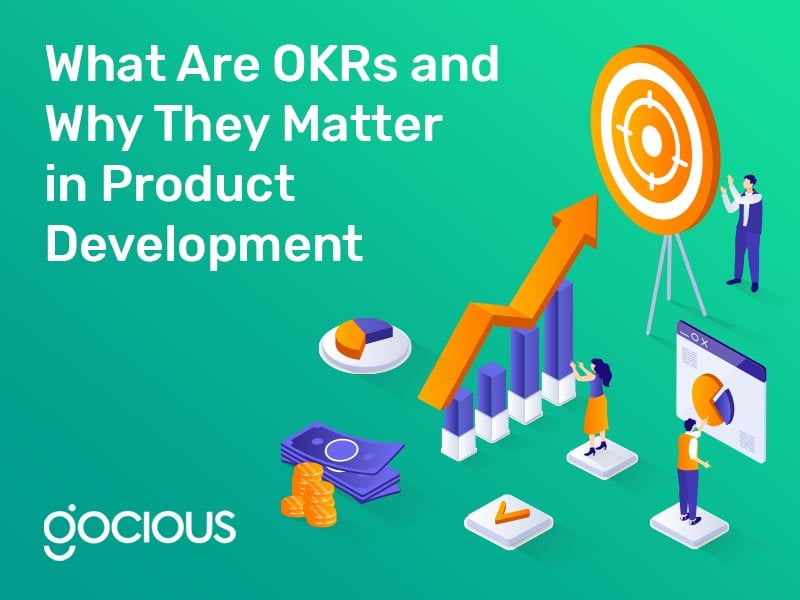
Subscribe to our blog
Ready to improve your roadmapping process?
Curious about how Gocious can help your manufacturing team transform its Product Lifecycle Management strategy? Let’s schedule a call to explore!
Product Management Articles
Why Company Goals Need to Extend Beyond the Product: Building Sustainable Success
Success in manufacturing relies on the ability of the product team to create products that resonate with the consumer. Traditionally, companies have focused on product-centric goals, investing heavily to identify products and features that meet the customer's needs.
How to Use Product Segmentation to Enter New Markets
Every product manager knows they must meet their target audience's needs to succeed. However, they also know that while consumers may ask for a laptop computer, not all their needs will be the same. For example, a customer who loves to play online games will value a powerful CPU and pay more for a smooth experience, while a college student majoring in the arts will value a lightweight model that doesn't add bulk to their stuffed bag. They only need their laptop for general use, and they will not pay more for additional speed or memory.
5 Mindset Shifts to Make When Adapting to Lean-Agile Approaches
With the increasing number of products introducing software components and the constant appetite for new customer features, many companies are looking to adopt Lean-Agile approaches for product development to stay competitive. Many resources out there help lead companies towards Lean-Agile approaches, such as the SAFe Framework, which helps companies of all sizes make Lean-Agile methods work for them, no matter the scale of production. But adopting any new method also requires a shift in mindset. Here are five mindset shifts to help product managers confidently make the switch.
When Should Your Organization Adopt a Hybrid Approach to Product Development?
Developing new products that customers love is a challenge but a rewarding one when your team gets it right. Moving from the initial idea to the production and release of the product requires strategy and some type of framework. In product development, a company can take choose from a handful of approaches to build and develop new products. The most commonly used approaches include stage-gate, agile, and hybrid systems. This article will delve into these three methods and determine where they are most suitable.
Is a Product Roadmap Contrary to Agile Philosophy?
In the product development world, there are various opinions on Agile Philosophy. Should organizations use it? Does it work for manufacturing complex products? Is it scalable for large companies?
What Is Systems Engineering and Why Product Managers Need To Care
In today's technology-driven world, the products we use every day are an increasingly complex mix of software and hardware components. Developing these modern products requires multiple resources, including personnel and components, to build them; systems engineering is the process that brings these different resources together to create a finished product. Product managers must be in tune with systems engineering so they can navigate the many challenges of modern product development.
What Is Stage-Gate Methodology, and Should You Still Use It?
The Stage-Gate methodology has become widely used since it was first introduced as a system in the 1980s. Many companies were using pieces of the puzzle already and found it both easy and exciting to have a system to follow and launch more products successfully. As with any industry, time brings innovation and changes that require methodologies to update and adapt to them. Does the stage gate process for product development remain strong after nearly forty years? Let's discuss the state of the Stage-Gate process and whether manufacturers should still use it.
How the Role of the Product Manager in Hardware Is Evolving
Product managers have traditionally been viewed as intermediaries tasked with understanding customer requirements and translating them into products and features that engineers and product teams understand. However, the rapidly evolving landscape of hardware development has resulted in a significant transformation of the product manager's role, requiring them to step into more prominent positions of leadership and innovation to build successful products.
Living in a Hybrid World: How Product Managers Can Navigate Stage-Gate, Agile, and Hybrid Models
In the product development world, different companies use various methodologies to plan, build, and launch their product lines. Some continue to use the traditional stage-gate methods of making and testing complete prototypes over several years before launching to the market. These companies typically have large-scale, complex physical products such as vehicles, machinery, or massive software programs.
What Is the Role of AI in Product Development?
Although AI is a newly emerging trend, its applications are already found to be beneficial in multiple industries. In product manufacturing, AI is particularly useful in improving product development processes, predicting customer preferences, and automating laborious tasks.
What Are OKRs and Why They Matter in Product Development
They say that setting a goal means nothing when you have no way to track your progress or measure your results. The same truth applies to business. Your company may set lofty objectives, but without a clear plan to achieve those goals or specific metrics to track and measure success, those goals will likely not be reached.
How to Develop a Product Line: Clone & Own vs. Platforming
Every company that has developed a product their customer loves wants to repeat the same success. It feels good to know your market and deliver value. Some product teams think about long-term success and put plans in place from the initial design. They know that if their product is successful, they’ll want to create other versions. Even companies who haven’t planned in advance to replicate their products still have a choice to make between these two methods.













